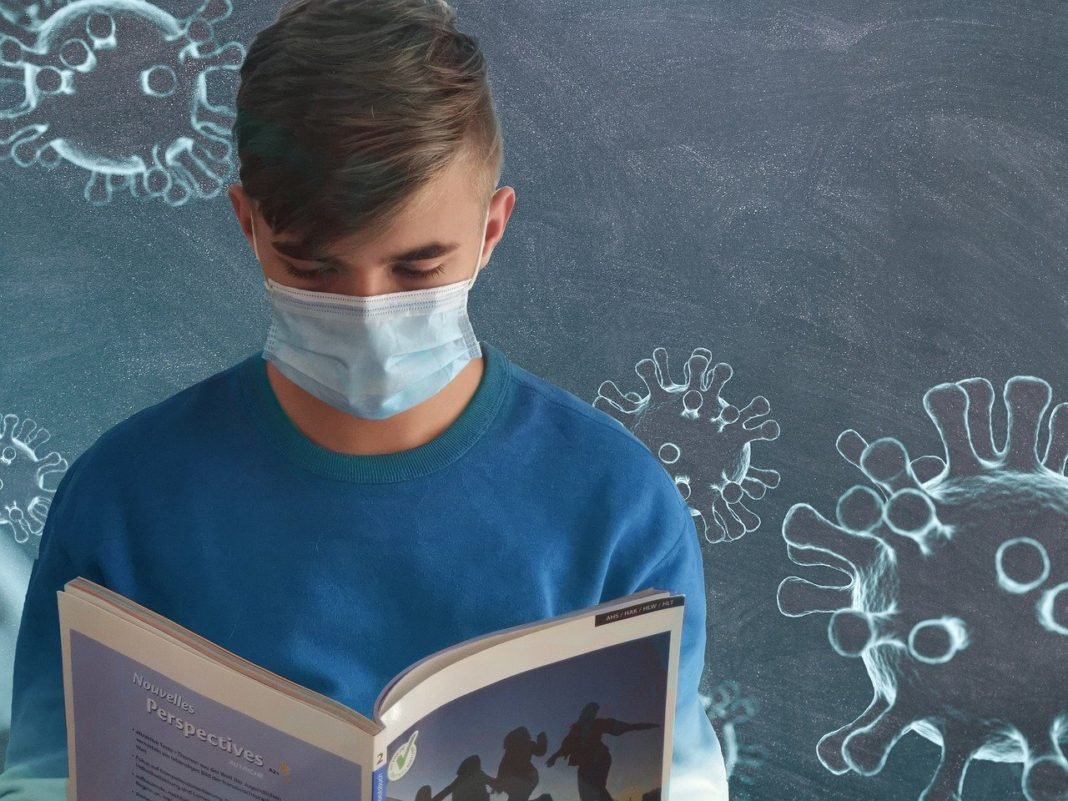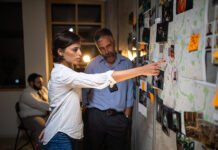COVID-19 pandemic has made a global impact in the past weeks and continues to impact most of the sectors, with the education sector being one of the most affected ones. Students across the world are losing valuable time in their education due to the lockdown imposed. But there are numerous online learning opportunities which they can access from their homes, thereby making good use of this lockdown period for skill enhancement. Most of India is at home these days amid a nationwide lockdown. And many are spending a lot of time online, largely in search of entertainment or education. But, just like the real world, the virtual one too has class privileges. So, while many universities and colleges are conducting online learning sessions, students from disadvantaged families or living in remote areas may not have access to Telegram, icloud or, indeed, the internet even in the best of times.
Here in the present article the researcher was conducted an online Interview of the faculty members, working in various Academic Institutions to collect their views related to Online Education System during the current situation. More than 20 Teachers and Academicians were talked to from different provinces across the country. In the present article some cases are present. Everyone described this technology as the most suitable technology for the continuation of education smoothly at this critical time with some limitations.
A country, which has earlier been the home to a civilization of having a glorious educational past with the likes of Nalanda and Takshashila universities, and were staunch believers in the need for the physical presence of a teacher to educate students, is a little skeptical about learning a certain course from a teacher who is miles away. These thoughts prevent many people from taking online courses, so they get mired in the traditional educational system which consumes a great deal of money, nerves, and years of their lives.
But in the recent times, a key aspect of coping with Covid-19 is to ensure that services are being delivered to whatever extent possible. While for professionals across industries it has been an easier transition as many of them work on their laptops and smart devices even in office. They can simply plug in at homes now. Of course, what is missing is face to face, personal communication which will get restored as and when things are back to normal. But students have had to make far bigger adjustments as learning has always been in classrooms which they can’t go to now. Besides many of them may not be that well equipped with technology tools to avail of remote learning. Here the Digital India vision of the government is emerging as a vital instrument for solving the present crisis due to Covid-19.
The lockdown has accelerated adoption of digital technology. Business houses, educational institutes, analytics, computer, data management methods and online education solutions have been forced to work in tandem and improve in quality and delivery time to handle such situations. This is an ideal time to experiment and deploy new tools to make education delivery meaningful to students who can’t go to campuses. It’s a chance to be more efficient and productive while developing new and improved professional skills/knowledge through online learning and assessment. It is also a fact that use of technology in education is resulting in different concepts in the system, for instance the move from teacher-centric education to student-centric education. We have been talking about virtual classrooms and various online tools today allow us to make the engagement between the teacher and students as close to a real, in classroom type experience, as possible. Going forward, these tools can also make the teachers and parent meetings as well as staff/management meetings more time and cost saving while providing the necessary interactivity.
Pedagogy in digital education is an important link between course content, educationists, technology and course-takers. Democratization of technology is now an important issue, comprising internet connectivity, telecom infrastructure, affordability of online system, availability of laptop/desktop, software, educational tools, online assessment tools, etc. But it is a fact that technology-based education is more transparent and does not make difference in front v/s back benchers or girls v/s boys.
Looking at this challenge of colleges and schools being shut, government of India, as well as state governments and private players have regularly been publishing information on various initiatives undertaken by ministries like MHRD, Department of Technical Education, NCERT and others to support and benefit youth/students.
A few of the initiatives are SWAYAM online courses for teachers, UG/PG MOOCs for non-technology courses, e-PG Pathshala or e-content containing modules on social science, arts, fine arts, natural and mathematical science, CEC-UGC You Tube channel, Vidwan – a database of experts who provide information to peers and prospective collaborators, NEAT – an initiative by AICTE based on the PPP model to enhance the employability skill among students, in collaboration with Education Technology Companies and National Digital Library (NDL), a repository of learning resources with single window facility. Many noteworthy initiatives have been taken up like Spoken Tutorial, Free and Open Source Software for Education (FOSSEE), e-Yantra, Google Classroom and so on.
It is fact that the government of India as well state governments, through their various ministries/departments, have created infrastructure to deliver e-education. These include National Knowledge Network (NKN), National Project on Technology Enhanced Learning (NPTEL), National Mission on Education through Information and Communication Technology (NMEICT), National Academic Depository (NAD), among others. All these enhance our ability to connect easily with institutions and enhance our access to learning resources. For instance, NKN provides high speed network backbone to educational institutes in India.
The online assessment agencies/private business houses are also improving the product, considering the limited bandwidth and social distancing, by managing remotely proctored examinations/schilling assessments. Basic requirements like sturdy education delivery platforms, IT infrastructure, PC/Desktop/Mobile for end-delivery and assessment tools have been planned and more improvement is underway.
Going forward, the use of technology in teaching or recruitment will lead to a new era wherein the best of faculty will be available from across the globe to students. Education quality will be gauged not just by the quality of faculty but will also have quality of IT infrastructure and familiarization of the faculty will digital teaching technologies as important parameters.
The physical infrastructure of academic institutions will have less impact on the quality of education and thus directly on the cost of education. Review meetings, parent-teacher meetings, subject conferences will be location agnostic. The real vision of the new education policy for liberal education will get executed. It is possible that in times to come, a student may be allowed to carry out courses from any College/ University based on quality of teacher and fees for the course irrespective of his location and finally will get degree from the home university where he / she got registered or from the university where he has taken maximum courses, resulting in a balance of economics of good education.
For all this to be a reality, a drastic change in thought process is required in the mind- set of policy makers, authorities, students and specially educationists. Faculty selection should gradually be linked to technology friendliness and keenness for technology adoption. Similarly, accreditation parameters, criteria need reconsideration. All these steps will help strengthen the country’s digital learning infrastructure in the long run. Covid-19 has only accelerated adoption of technologies to deliver education.
In the present study the researcher interviewed some academicians across over the country and compiled their experiences in form of cases.
Case 1
Grudas College affiliated with the University of Calcutta in West Bengal has a large section of students coming from remote areas and backward sections. Apprehending a shift towards digital education, Swati Moitra, who teaches there, conducted a survey in her class to find out how many students were equipped for switching to online learning. It was a small sample size that showed 69 out of 91 were reliant on internet data plans on their phones. She was told many had connectivity problems and didn’t have tablets or laptops. They expressed to her in plain terms that data usage was limited and could be a financial strain. “I teach in a college where many are first-generation learners, coming from low-income households, who don’t have devices with advanced storage capacity. Now, I hear some teachers are holding Zoom classes and that sounds lovely in elite institutions. But my realities are different considering the students I teach,” she said. Gauging their circumstances, one of the teachers offered a data pack to some students, but analysts say that is a noble idea and not a practical or workable one which would make the system responsive to the needs of the learners. Some of the students were asked if they had a family member who could share a device for the class. When no uniform solution emerged, Moitra started recording lectures on You Tube and sharing them on email. “I have students who live in districts with limited net connectivity. You see, having 4G and getting 4G are two different things,” said. Moitra expects some learning loss to take place with students who are unable to reap the benefits of technology, and is archiving everything in Google Classroom so that students can go back to it as and when possible.
Case 2
More than 2,000 kilometers away from her, Kanchan Mahadevan from Mumbai University is concerned about the non-inclusiveness of the medium, yet determined to do the best in taking the education to the remotest areas. All her students have smart phones and can access the internet, as well as social media and whats app. Moreover, they have been regularly using technology to connect on class-related matters (such as announcements, project work, discussions).But, she added that “all students are not in this situation.” Mahadevan was referring too many of those students who live in hostels and had to return to their homes before the lockdown, some belonging to very remote areas. “Without access to laptops or tablets, it becomes difficult to get e-resources and e-libraries. Smartphone’s cannot always help in this context. Further, students also need icloud, hard drives, flash drives and other storage devices which they might not get in remote areas,” she said. So, students from economically vulnerable sections are at a disadvantage, Mahadevan said. “But our teachers will make an effort to help such students out by sending them the specific e-resources and scanned copies of texts through email and whats app. Moreover, these students can be assisted with additional classes and detailed attention when the lockdown is lifted.” The teachers are supplementing the online classes with detailed email or whatsapp communication. Mahadevan is connected with her large class of MA part I level via email. The teachers ensure that the lecture plan, reading list and reading material are communicated before the online class. “There has to be an interactive engagement with student responses to all of this material and questions both through online discussion sessions and through email,” she said. Learning requires the experiential component that comes from field work, personal interactions, interviews, surveys and public libraries, she said.” This is especially so for the humanities and social sciences and cannot be done effectively through online methods alone. Students have to struggle without public libraries or field work. Indeed, some of my students who could not complete field work have had to rein their internal assignment topic to fit in with the restrictions.” Against the backdrop of these challenges, many teachers believe online education is “not a substitute but an appendage to classroom teaching and other methodologies. It is a temporary aid during the difficult situation that we are facing,” said Mahadevan.
Case 3
The teachers in the University of Delhi also realized that they too have the same problems in taking online education effectively to the backward and remote locations. Swati Goyal, guest lecturer from PGDAV College clips her lectures into small files so that they can easily be sent on email or WhatsApp since many of the students is unable to join Telegram on which heavy files can be easily sent.” I was thinking of skype, Google Classroom, and Zoom etc to connect with the students in a better way. But then it dawned upon me that it was not going to serve everyone. A lot of students also worry about spending money on data plans, and heavy files take time to download in poor connectivity,” said Goyal.
Case 4
Samira Nadkarni, who teaches at St Andrew’s College in Mumbai that gets a relatively more affluent crowd, said that online education still doesn’t trickle down enough, no matter how fancy the institute. Some of her students do not have laptops at home. “It’s not just connectivity that’s an issue but many of them need assistance and won’t be able to use technology on their own,” she said. And, it’s not just students who face problems. There are teachers as well who need guidance and assistance.
Case 5
Ela Goyal, who has a PhD in the use of technology in education, is an alumnus of St Stephens College and former professor in a management school is running independent workshops to train the teachers. “Many of them are not aware of how to conduct online classes; most of them are from socially and economically underprivileged backgrounds and are not aware of such tools,” she said. They are also a little scared about how they would “look on video, and would the parents of the students be around? Will there be monitoring? There is apprehension that ease of a classroom cannot be replicated in this mode,” said Goyal. Many of them are being trained in how to get students online, and made aware of configurations on the phone and zero expenses required. Goyal said that in class, the teacher-student interaction is candid and a discussion can organically develop, touching upon current political and social events, “In online education, when we share audio files, it becomes a one-way process which can be read out of context,” she observed.
Case 6
Schools and colleges are a discursive space where youngsters learn to live in a universe of ideas and discourses, said Krishna Kumar, former NCERT director. “The e-peddlers seldom think about this; even among adults, one rarely finds people willing to concede that virtual relationships or conversations are illusory in a fundamental sense. “Kumar reminds us of theories developed by the communication philosophers like Ursula Franklin and Paul Virilio who warned the world about the digital trap. “In education, the issue is not whether internet services can be fairly distributed across different classes, or whether poor children can have equal access to digital devices. Digital businessmen will happily promise such a future, with quick endorsement by political leaders,” he said. The real issue, in his opinion, is “whether digital learning is learning at all and whether public money should be transferred from maintenance of schools and hiring of teachers to purchase of digitalis and its upkeep”.
Case 7
Jyoti, a parent of a class 4 student, said, it should never come to that point. She sees her daughter, studying in a school in Gurugram, leave for virtual class at 8.40 am till 3 pm. “Why?” she asked. “The crisis should not open the doors for e-peddlers and schools must resume normally.” It took me a couple of days to get the hang of it,” says Jyoti. “We’re not teachers. We can’t do as good a job as a trained teacher would do… but the school has given guidelines which are helpful.” This includes detailed notes on how to teach the topic at hand, what questions to ask the child and how to prompt her if she’s confused. Subjects covered include English, Mathematics, Environmental Studies, Hindi and even Yoga. The children have 10-minute sessions of the latter three times a week. Here too, the teacher provides detailed notes on what asana to practice, how long to hold the stretch for and when to deep breathe. Online instruction may never replace in-person learning, but how effective is it as a mode of instruction? “The teachers are very proactive,” says Jyoti.
Case 8
Rustom Kerawalla, chairman of the Ampersand Group — a leading school management services provider in India and abroad — is all for e-classrooms and proposes a plan to be pursued in a phased manner with the government rolling out 5G telecom services at the earliest for greater penetration of the telecom network which would have far-reaching effects in the sector. “As of now, the online education sector currently is not guided by any standard norms or regulations by the government. Further, the definition and framework of online education is lacking and in some cases online education even includes teachers sharing worksheets and study material on whatsapp and training sessions on skype,” he said. Therefore, Kerawalla said, it is an urgent priority for the government to regularize the online education sector and define standards and regulations for it. There is a need for monitoring mechanism and online assessment, he added. In this process, said Kerawalla, it’s also important to create a cloud-based system and evaluate how artificial intelligence delivers in online assessment.
Case 9
Every morning, Myrah Reshamwala settles down on the chestnut desk in her parents’ room, erects her mother’s ipad in front of her and taps her way into virtual classroom. A fresh lesson awaits her, as do some You Tube links posted by her teacher to reinforce the topic being taught. After all, Myrah is just five years old and needs help understanding the lesson at hand, posted on Classroom—an app developed by Google that lets teachers post videos and assignments, and chat with their students. Myrah attends the Cathedral and John Connon School in Mumbai. Like schools across the country, it shuttered in mid-March, following a government directive to contain the spread of the new corona virus. Millions of students have been affected by the school closures, but for many, like Myrah, the learning hasn’t stopped. To encourage a sense of community, Cathedral plans to organize live Zoom meet-ups for its infant section. Myrah, for instance, is scheduled to meet up with her classmates via the app next week. “It will be fun seeing all my friends,” she smiles. “One piece of homework Myrah did was incorrect, so we had to redo it and upload it again.” She adds, “It’s a fair substitute for the real thing, given the situation.”
Case 10
What’s remarkable is the speed at which schools were able to make the switch from offline to online. Cathedral, for instance, closed its doors on Thursday, March 13, and by Monday, March 17, the first online lessons were rolled out. “We’ve been using Google Classroom for about four years now,” says Sharmila Lele, headmistress of the infant section of the school. “But that was mainly for reinforcement.” To prepare for complete online instruction—as opposed to a blended kind—the teachers worked through the weekend, altering lesson plans and tweaking assignments. Since live sessions with the teacher on platforms like Zoom are unproductive for the very young, Cathedral requested parents to take on the role of makeshift teachers. “We’re aware that this can feel isolating,” says Lele. “Especially for young kids who’ve just about started school. So once we resume school—whenever that maybe—we will put in place lots of group activities, games and so on to make the kids feel that they are part of a class.”
Case 11
Anushka Reshamwala , on the other hand, studies in class nine of the same school and has a more rigorous schedule. Every weekday, she has four one hour-long live classes on Zoom starting at 9 am and wrapping up at 1.30 pm. She gets a 30-minute break in between. Teachers start off their classes by marking attendance. It’s as intense as school,” says Anushka, adding that she isn’t allowed to lounge about on a bed and take classes. She has to be seated on a desk and access the lessons on a laptop or tablet, not a Smartphone.
“I’m able to concentrate more online,” says Anushka, counter intuitively. “That’s because everyone is muted and only the teacher speaks. If you have a question, you unmute yourself and speak.” Assignments are posted on the Classroom app. She works through them, clicks pictures of the completed work and uploads it on the app on the due date. Teachers revert with comments and corrections. “Communication is also pretty seamless,” she says, referring to chat feature on the app that allows students to freely connect with their teachers. But she misses the camaraderie that a school setting offers. “You get to meet your friends, chat about stuff…all that isn’t there online. It can feel isolating.”
Case 12
“I’m able to keep up with my school work,” says Ruhika Bhende, matter-of-factly. She studies in class 6 of JBCN International, a school in Mumbai’s Parel area that also implemented online classes in response to the lockdown. Her mom Rima chimes in, “The school is doing a good job and at least the kids are gainfully occupied. Otherwise they get bored sitting at home all day.”Ruhika has online school from 8 am to noon with two 30-minute breaks in between. She also pursues gymnastics outside of school, competing at the international level. Her coach now conducts an hour-long session on Zoom every evening. Despite the number of hours Ruhika ends up spending on screen every day, her mother is unperturbed. “It is what it is at the moment… besides technology is not all bad. There’s good to it too. This way Ruhika ends up having a full day,” she says.
Case 13
At most schools Forbes India spoke to, the teachers had some prior experience in using online tools to reinforce concepts or assign homework. But switching to a fully online mode of instruction was challenging at first, says one teacher from RN Podar School in suburban Mumbai, who spoke on condition of anonymity. “We’re teachers, not actors. Looking into a camera and teaching on Zoom is not something everyone is comfortable doing,” she says. So some have opted to just show their power point presentations on the screen as they speak to their class. “We’ve found ways around it,” she says.
Case 14
An unfortunate reality brought to light by this crisis is the deep digital divide that exists between children from different schools. While the more affluent schools are tech savvy, others have fallen behind in getting online, says Ashish Rajpal, founder and CEO of XSeed. His company provides middle-income schools following the ICSE and CBSE syllabi, with step-by-step lesson plans for teachers and students. Several schools XSeed works with had vacations coming up when the closures were announced, so they just broke for the holidays early, says Rajpal. Other more enterprising schools have “tried to do something” on their websites or on Zoom, but without much success. That’s because of several factors. For one, the children don’t own devices with which they can access classes online—laptops and tablets are a luxury they can’t afford. “There’s only so much you can do on your father’s Smartphone,” says Rajpal. Second, even if they have devices, patchy internet connectivity is an issue. “Not all kids have the same kind of access to the web, sadly,” he says. Third, space is a constraint. Children from these backgrounds often share small rooms with their parents or live in noisy joint families. Given these constraints; XSEED is working on some online modules and teacher training programmes to help these schools. “It will be a combination of utility, quality and sustainability. I can’t divulge much now, but in a month or so we should have something ready,” says Rajpal.
Case 15
Dr. V. K. Singh, Director of one of the leading Engineering Institute in Lucknow, Babu Banarasi Das Northern India Institute of Technology, shared his experience regarding conduction of online classes. He said “Lockdown due to COVID-19 has effected one to one interaction with each student for their studies. The Class Room Teaching & Online Teaching has difference, in Class Room Teaching mentor has an idea that their students how much understands their concept by their facial expression in a group of class but it will not possible in Online Classes i.e. “Feelings are virtual in Online Classes”. Again he shared that as Head of an institution following are hurdles to monitor the academics through online classes:
- As Head we have monitor the Online Lecture Delivery of Students through Online attendance in number of ways.
- As Head we have to monitor the quality of notes & lecture provided by the faculty members only through online system
- As Head we have to monitor Online Examination of all students & result declaration.
CONCLUSION
Over the long term, schools that are presently experimenting with online learning—in whatever capacity—will be more inclined to take it up more seriously once the crisis passes. “There’s no doubt that going forward schools/Colleges will look to offer blended learning programmes,” says Anindya Mallick, partner, Deloitte India, who focuses on education and skill development. Edtech platforms also stand to benefit, he adds. Consider, Byju’s. When the school closures were announced, the Tencent-backed unicorn decided to open up its platform to students for free.
For many people in self-isolation, it can feel like the corona virus has put the world on hold as every one wait for release from the temporary imprisonment. But increasing numbers of people are using the time to build their skill set, with an upsurge in enrolments on online learning platforms such as edX, Future Learn and Course era, which offer “massive open online courses” – or Moocs.Coursera, for instance, has seen an eightfold increase in enrolments for social science, personal development, arts and humanities courses since the start of the corona virus outbreak. “It’s unprecedented,” says the company’s chief product officer, Shravan Goli.
It has since seen a 60 percent increase in the number of new students using the app to learn from home on a daily basis, says co-founder Divya Gokulnath. Unacademy, another Bengaluru-based edtech platform that offers live classes and mock tests for those preparing for examinations like IIT-JEE, has also gained. It opened up their platform to institutions for free to help them through this period of upheaval. 500-600 K-12 schools are using the platform, says Gaurav Munjal, co-founder and CEO. “B2B is not what we do, but we’ll do what it takes to help institutions tide through this.” As a happy by product of the crisis, the shift to online education will happen much quicker, he believes. “Things were anyway moving online, but what would have taken two years earlier, will now taken a month.”
Devoting some quarantine time to self-education makes sense. Besides helping to bolster the career during this economic uncertainty, learning a new skill can give a sense of control that will help cope with anxiety engendered by the epidemic. As James Wallman says in his book Time and How to spend it, personal growth is central to many psychological theories of long-term happiness. So although an hour listening to a lecture may not be as enticing as the instant gratification of reality TV or social media, it will lead to greater life-satisfaction in the long term. “You could say that humans are like bicycles: if you’re not heading towards something you fall over,” Wallman says. And when we are social distancing, online courses are one of the best ways to do that. The specifics vary from platform to platform, though many follow the same basic model. With the larger platforms such as edX, Coursera, and Future Learn, you can choose university-affiliated courses – so you know you are being taught by experts in the field. The courses are of varying lengths – from a few hours to a regular, weekly commitment over several months – and typically involve video lectures, reading texts and regular tests to check the memory and understanding of the syllabus.
Another good strategy, according to Anant Agarwal, the founder and CEO of edX, is to find a “study buddy or form a bigger learning group, so that they can motivate each other and enjoy the course together”. A person might make a pact with other people they already know, or could connect with people from the discussion forums that accompany the course. Like classmates at a traditional school or university, they can help each other to understand the difficult material, and the feeling of accountability might spur on when they find distractions drawing them away from their goal.
For some, this may be just the start of the journey – furnishing with a greater confidence to learn and the motivation to take it further. If ones find that hooked, many of the platforms also provide accredited bachelors and master’s degrees from selected universities, though this will be more expensive. For others, the completion of a single course will be enough. But whatever goals, the quest to learn a new skill or discipline may be the perfect distraction from the frustrations of self-isolation – allowing the person to connect with new people and transforming this period into a time of enlightenment and self-discovery.
In the next decade, digital and virtual learning will be the new normal. Analysts believe that smart devices will play a greater role in learning, virtual learning will become more common and print textbooks may slowly become obsolete. Technology will continue to improve the education scenario in India through solutions such as digital classrooms and virtual labs, said Fallon. In fact, the Corona virus outbreak could be a tipping point for education technology, which, when surges to meet soaring demand, could provide employment opportunities to many in the sector in the near future.
REFERENCES
- Abhilasha Gupta, Mohali, Hindustan Times, New Delhi, Retrieved from (Fri 17 Apr2020), https://www.hindustantimes.com/cities/e-learning
- David Robson (2020), The Guardian (2020) Retrieved from (Sun 19 Apr 2020 09.00 BST), https://www.theguardian.com/education/2020/apr/19.
- Higher Education Department, Govt of Kerala, Retrieved from (Sun 19 April, 2020), https://www.asapkerala.gov.in
- Nandini, Hindustan Times, New Delhi, Retrieved from (Sun 12 Apr, 2020) https://www,hindustantimes.com/education/covid19
























